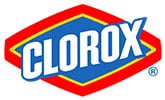Hastelloy C For Your Mixing & Blending Process
Typically the top entry agitator will have Hast C for the mixer shaft, mixing impeller, and often times the flange mount and mechanical seal – so all “wetted mixer parts” are corrosion resistant. Many people have asked for Hastelloy C-276 but instead they were pushed into getting Hastelloy C-22 instead. This may have also happened to you, and now you may be wondering what the differences between them are, and why some people prefer one over the other.
Reasons Why C-22 Is Considered The Better Choice Than C-276
C-22 is more resistant to corrosion than Hastelloy C-276, and this is one of the reasons why many people prefer C-22 over C-276.
The cost of the material as well as the lifespan of the material will depend on how well it can withstand different environments. There are quite a few differences in the chemical compositions of C-22 and C-276. C-22 is around 22% chromium while C-276 is around 16% chromium. This may not seem like a big deal but that 6% difference is actually what allows C-22 to be more resistant to corrosion, and this improves the lifespan of the material by quite a bit; in matter of fact it improves the life by 5-10 times.
Oxidizing environments are found in numerous of sources, and some of the most severe ones are found in sodium chloride, sulphuric acid and hydrochloric. C-22 can withstand such environments, and C-22 also shows that it has great resistance to seawater, brine solutions, acetic anhydride, acetic acids, inorganic acids and hot contaminated organic acids to name just a few.
When compared to C-276, C-22 also has great resistance to stress corrosion cracking, pitting and even crevice. As you can see by now, you know why C-22 is the better choice and why people prefer C-22 over C-276.
You should also know that C-22 and C-276 has underwent testing in oxidizing mediums for crevice corrosion and pitting. The test revealed that C-22 is much more resistant to oxidizing media than C-276, which is yet another reason why many people prefer C-22 over C-276.
One of the reasons why C-22 is so resistant to corrosion is because C-22 weld filler materials actually provides great weldability.
Many people have complained about the corrosion in their welds, but materials that have been filled with C-22 have addressed many concerns that people have had.
It is also worth mentioning that C-22 is also resistant to inter-granular corrosion in HAZ, or heat-affected zone, of weldments.
Both C-22 and C-276 have been tested in how well they handle exposure to oxidizing sulphuric acid solution, and C-22 only faced very little corrosion, while C-276 suffered from severe corrosion.
C-276 also suffered from severe corrosion when it was tested in the saturated wet chlorine environment. C-22 did a good job at withstanding higher temps in the same phases that the C-276 went through.
All of the above factors show that C-22 is the much better choice than the C-276 material. When you need material for your process, the choice is clear and that choice is C-22. C-22 has a great lifespan and great performance.
For any corrosion resistant exotic alloy mixer, or for non metallic agitators and impellers contact WMProcess.com.




























